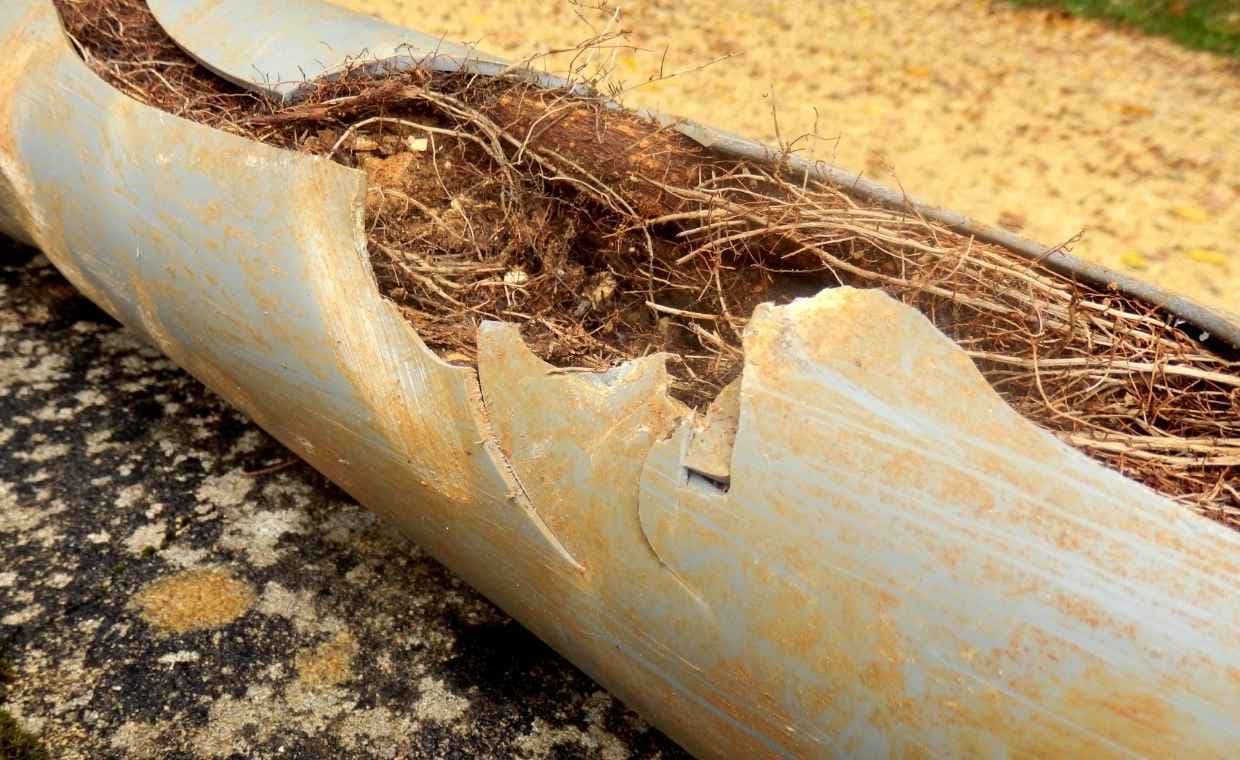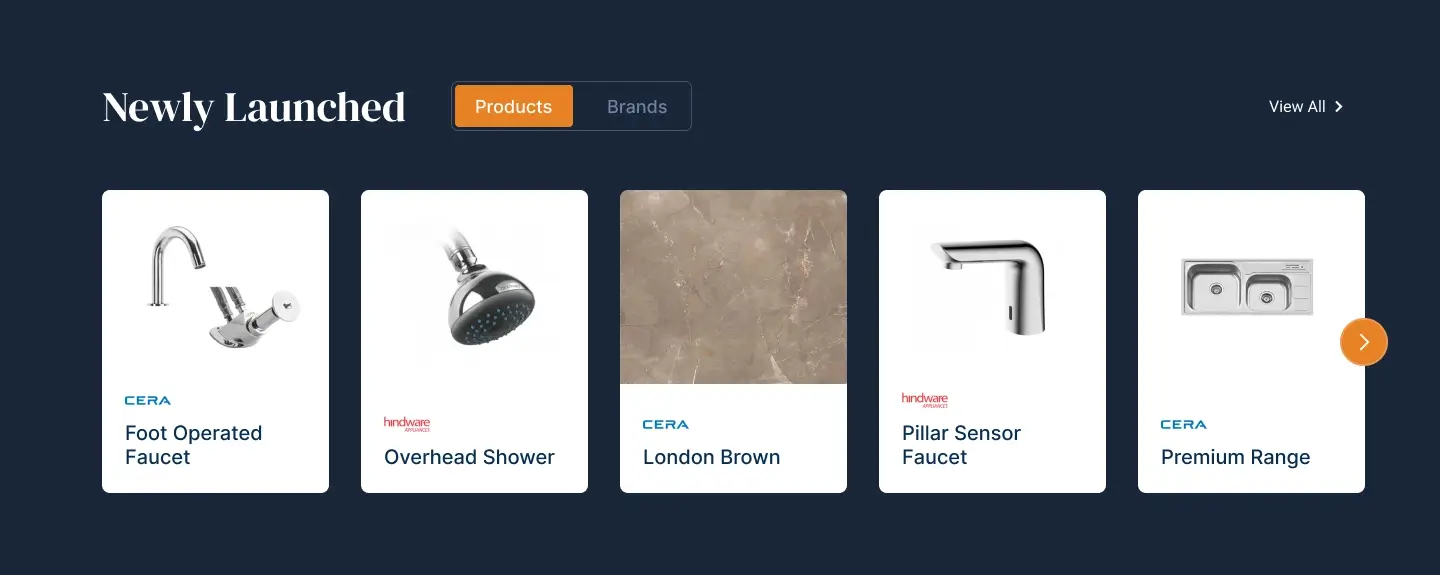
Table of Contents
Quick Overview
Tree roots can penetrate sewer lines, causing blockages and damage. The following are signs of tree root intrusion in your lines that should not be ignored:
- Increase in water bill
- Slow-draining fixtures
- Sinkholes in yard
- Gurgling noise when flushing or draining
- Foul odours
- Toilet backups
- Damage to the foundation
Removal Methods
- Use salts and chemicals to kill roots.
- Use mechanical tools to cut tree roots inside sewer lines.
Preventative Measures
- Plant trees away from pipelines.
- Install root barriers.
- Inspect lines regularly.
Trees play a vital role in supporting both human life and the environment. They improve your surroundings not just aesthetically, but also functionally and environmentally, enhancing air quality, reducing noise pollution, providing shade, supporting biodiversity, and even increasing property value.
All of these benefits hold only when trees are planted thoughtfully, without obstructing any underground or above-ground utilities. However, in any case, if your trees are too close to utilities, especially sewer lines, then removing them may eventually become unavoidable.
When left unmonitored, they can invade underground plumbing systems in search of moisture, especially if your sewer pipes have tiny cracks or leaks. Once inside, these roots cause serious issues like clogs, backups, and slow drainage. In this blog, Gharpedia helps you understand why tree roots in sewer lines are a major concern and what you can do to fix the problem.
Why do Tree Roots Grow in Your Drains?
Tree roots look for moisture and nutrients in the soil, and unfortunately, your sewer lines offer both. They are especially attracted to small leaks or cracks in pipes, which create a humid environment. When the roots find their way into the lines, they gradually grow and fill the pipe, disrupting your entire plumbing system, leading to significant damage, especially when not addressed promptly.
7 Signs of Tree Roots in the Sewer Line
So, how to know if tree roots are in your sewer lines? It’s simple. Observe the disruptions caused in your plumbing system. Watch out for these warning signs:
1. Spike in Water Bills

Have you ever been shocked by an unexpected spike in your water bill? If the answer is yes, then tree roots in your drain pipes could be the culprit. Root intrusion causes cracks and breaks in your sewer lines, leading to constant leaks. If water is leaking continuously from the broken pipes, then you’ve been paying for the water that is wasted underground.
2. Slow Draining Showers and Sinks

When tree roots find their way into your pipes, they begin to grow and spread. At first, you might not notice anything unusual, but over time, you will notice issues like blockage or even damage to the pipes. One of the earliest signs of damage is slow draining in sinks and showers. If you notice this red flag, check for tree roots in your sewer lines. However, remember to tackle the issue as soon as possible because this problem only gets worse over time.
3. Sinkholes in Your Yard

If your pipes have severe root damage, your lawn or yard may show soft spots or sinkholes. When tree roots grow aggressively inside pipes, they can crack or break the pipes, causing water leaks into the surrounding soil.
Persistent water leakage can saturate the ground, eventually leading to sinkholes. If you see these signs, call a professional right away to inspect your sewer line and check for root intrusion.
4. Gurgling Noise in Your Drain

Are you pondering the reasons behind the usual gurgle you hear after a relaxing shower? Well, that sound is a signal that the water is struggling to pass through an obstruction in the pipe.
Blocked drains produce a deeper, sinister gurgling noise whenever you empty the sink or flush the toilet.
Whenever you hear such a sound in your drains, it could mean that tree roots have invaded your drain pipes. Acting quickly can help you avoid more serious and costly damages down the line.
5. Foul Odours

If there is a persistent bad smell emanating from your drains, there’s a good chance that tree roots have made their way into your sewer line. When tree roots block the sewer line, they trap waste, which begins to rot and produce an unpleasant smell.
As the waste continues to accumulate at the point of blockage, the smell gets worse. If left unaddressed, it can turn into a serious plumbing and hygiene issue.
6. Toilet Backups

Another common sign of root intrusion is frequent toilet blockages. Tree roots can trap toilet paper and other debris, creating severe clogs that lead to toilet backups. If your toilet keeps clogging despite regular cleaning, it’s time to get your sewer lines inspected.
7. Foundation Damage

Foundation damage due to the ingress of water from the leaky pipes is a sign of tree root intrusion in pipelines. A foundation is the base of the entire structure, and when the foundation is compromised, the entire structure is at risk.
How to Get Rid of Roots in Sewer Line?
Tree root intrusion is a serious issue. The sooner it’s fixed, the better. Here are some effective ways to eliminate roots from sewer lines.
1. Salts Can Kill Tree Roots in Sewer Lines

Using certain salts and chemicals can help clear minor root intrusions. Let’s learn more:
01. Copper Sulfate as a Root Killer for Drains
Copper sulfate is a natural herbicide and an effective root killer, available in almost every general store. However, remember that it is effective in killing small roots, but never use it in septic systems. Flush half a cup of copper sulfate crystals down the toilet. This usually does the trick.
02. Rock Salt
Rock salt works similarly, but is safe for septic systems too. A single application can kill the roots. But be cautious here because overuse can poison the tree. While these salt treatments can restore flow temporarily, they are not permanent solutions. You must adopt more aggressive methods for a lasting result.
03. Foaming Root Killers
These are chemical solutions designed to dissolve tree roots inside the sewer pipes. These foaming formulas expand when mixed with water, coating the entire interior of the pipe, making direct contact with the intruded roots and eliminating them. Common active ingredients like dichlobenil or metam sodium kill roots on contact without harming the entire tree.
2. Tools Used for Clearing Tree Roots from Sewer Lines
01. Mechanical Auger or Root Cutters

A mechanical auger or rooter is fed into the sewer line until it reaches the obstruction. It then chops up the roots like a saw. Once the chopping is over, the pipe is flushed with water.
02. Hydro Jetting

Hydro-jetting machine uses high-pressure water, which is almost up to 4000 psi, to cut through and disintegrate tree roots. This is one of the most effective and reliable methods for clearing stubborn roots inside sewage lines.
If you are wondering about ways to clean clogged drains, read: Tips to Clean Clogged Drain (Toilet, Sink Sewer Pipe)
03. Sewer Cameras

Sewer cameras help inspect the inside of underground plumbing systems without excavation. A high-resolution, waterproof camera is passed into the sewer line, allowing plumbers to thoroughly inspect the intrusion of tree roots and the damage caused. Once all details and spots are identified, essential measures are taken to remove tree roots and fix all the leakages.
How to Prevent Root Intrusion
- Plant trees wisely. Maintain a safe distance from pipelines. Avoid planting species known for aggressive root growth.
- Install root barriers to divert the growth of roots away from pipelines.
- Regular inspection is a must for identifying the tree root intrusion early.
- Upgrade your pipelines to root-resistant materials like PVC and HDPE. These pipes are harder for roots to penetrate.
To Summarise
When it comes to your plumbing, tree roots are invisible enemies that silently unleash havoc in your home. The longer the issue goes unnoticed, the worse it becomes. Therefore, you should be vigilant to identify any signs of tree roots in the sewer line, so that you can act as fast as possible and curb the problem at the earliest.
After going through this blog, we hope you now have a clear understanding of how to detect and get rid of tree roots from your sewer line.
We’ve got more helpful tips to keep your plumbing system healthy.
Read:
Clog Protection Basics: 10 Things You Should Never Flush Down the Drain
10 Things People Unknowingly Do That Can Ruin Plumbing System!
Tree Roots in Sewer Lines FAQs
01. How do I know if there are tree roots in my sewer line?
To know about the presence of tree roots in sewer lines, check for the following issues:
- Slow drains
- Gurgling toilets
- Recurrent clogs
- Foul odours
- Sewage backups
- Sinkholes in the yard
If you notice these issues, then there is a strong chance that your sewer line has tree root intrusion.
02. How do tree roots get into sewer lines?
Roots want moisture. If your sewer lines have cracks or leaks, roots will infiltrate them in search of water, eventually blocking the sewer line.
03. How do you dissolve tree roots in a sewer line?
You can dissolve tree roots using chemicals like foaming dichlobenil, copper sulfate, or rock salt. These are poured into the drain to remove the roots without harming the tree. However, these are temporary fixes. For more severe blockages, mechanical removal or professional treatment is a must.
04. Can I use bleach or vinegar to kill tree roots?
No. Bleach and vinegar are largely ineffective on tree roots in drain lines. Use specialised root killer chemicals for best results.
05. Is it safe to use root killer in sewer lines?
Yes, most root killer chemicals are safe. However, follow the manufacturer’s instructions to prevent pipe damage or contamination.
06. Can roots get into PVC pipes?
If PVC pipes have cracks, the roots can enter them too. Since PVC pipes are flexible and durable, there are fewer chances of tree root intrusion compared to metal or cement pipes.
07. Is root intrusion covered by home insurance?
It depends on your insurance policy. Some insurance plans cover the damages due to tree root intrusion, but not the cost of pipeline repairs. It is recommended to read and discuss all the terms and conditions and the coverage with your provider.






























